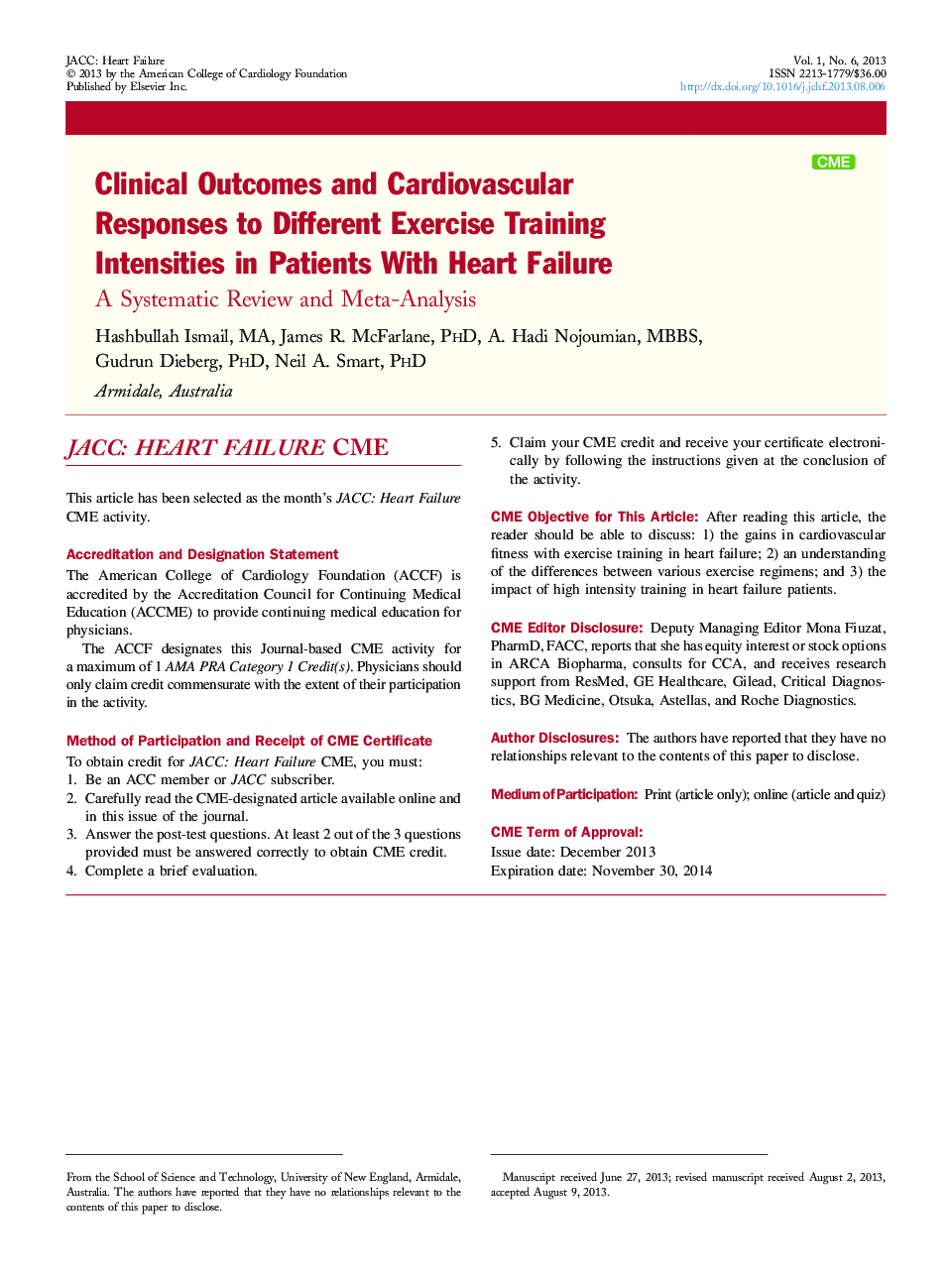| Article ID | Journal | Published Year | Pages | File Type |
|---|---|---|---|---|
| 2942620 | JACC: Heart Failure | 2013 | 9 Pages |
ObjectivesThe aim of this study was to establish whether aerobic exercise training intensity produces different effect sizes for fitness, adherence, event rates, mortality rates, and hospitalization rates in patients with heart failure.BackgroundIntuitively, greater exercise intensity is considered to result in higher risk for serious events, but intensity may be the primary stimulus for physical adaptation.MethodsA MEDLINE search (1985 to 2012) was conducted for exercise-based rehabilitation trials in heart failure, using the search terms “exercise training,” “left ventricular dysfunction,” “peak Vo2,” “cardio-myopathy,” and “systolic heart dysfunction.” Seventy-four studies were included, producing 76 intervention groups; 9 (11.8%) were high-intensity, 38 (50%) vigorous-intensity, 24 (31.6%) moderate-intensity, and 5 (6.6%) low-intensity groups, providing a total of 3,265 exercising subjects and 2,612 control subjects.ResultsPeak oxygen consumption increased by a mean difference of 3.33 ml·kg−1·min−1 (95% confidence interval [CI]: 0.53 to 6.13 ml·kg−1·min−1; p = 0.02) with high-intensity training in exercise groups compared with control groups, equating to a 23% improvement from baseline. For vigorous intensity, the mean difference was 2.27 ml·kg−1·min−1 (95% CI: 1.70 to 2.84 ml·kg−1·min−1; p < 0.00001), with an 8% weighted mean; for moderate intensity, the mean difference was 2.17 ml·kg−1·min−1 (95% CI: 1.34 to 2.99 ml·kg−1·min−1; p < 0.00001), with a weighted mean of 13%; and for low intensity, the mean difference was 1.04 ml·kg−1·min−1 (95% CI: −2.50 to 4.57 ml·kg−1·min−1; p = 0.57), with a weighted mean of 7%. In 123,479 patient-hours of training, not a single death was directly attributable to exercise.ConclusionsAs exercise training intensity rises, so may the magnitude of improvement in cardiorespiratory fitness, accompanied by lower study withdrawal in exercising patients. Total exercise time may be a confounder.
